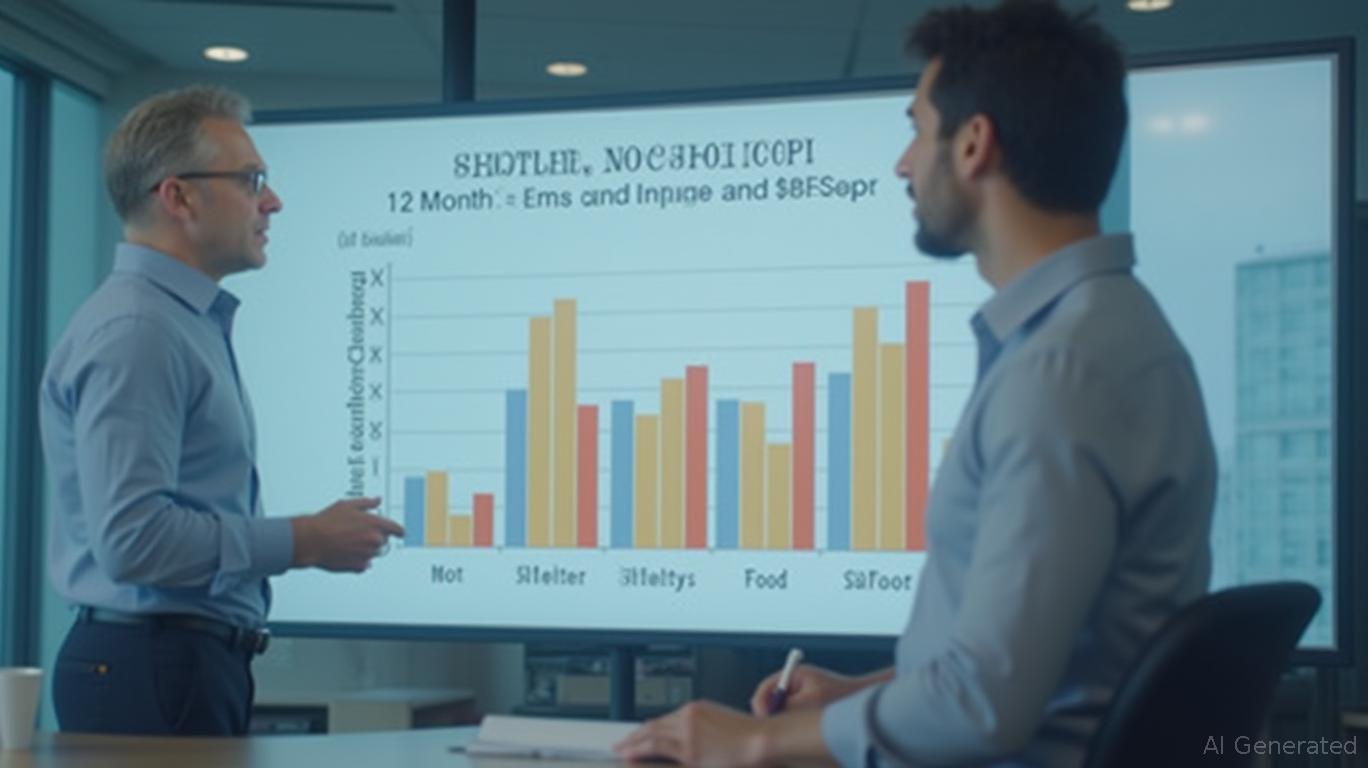Debunking Tariff Fears: How Inflation Data Points to Hidden Investment Opportunities
Recent economic data has revealed a stark contrast between the fears surrounding tariffs and the reality of inflation dynamics. While concerns about U.S. tariffs spiking consumer prices to unsustainable levels have dominated headlines, the latest Consumer Price Index (CPI) figures and sector-specific analyses suggest a more nuanced story. In this article, we dissect the data to debunk myths about tariffs and inflation, then identify sectors poised to benefit from the shifting economic landscape.
Debunking the Tariff-Inflation Myth
The most persistent myth is that tariffs are the primary driver of inflation. However, the April–May 2025 CPI data tells a different story. While the all-items CPI rose 2.4% year-over-year, the key culprit is shelter costs, which surged 3.9% annually. Energy prices, meanwhile, fell 3.5% over the same period, and food prices increased just 2.9%.

This data underscores that shelter—not tariffs—is the dominant inflationary force. Tariff-driven price hikes are sector-specific, not economy-wide. For instance, while apparel prices rose 17% under all 2025 tariffs, the broader CPI remains anchored. This contradicts the fear that tariffs would ignite a broad inflationary spiral.
Sector-Specific Tariff Impacts: Where the Pressure Lies
The Budget Lab (TBL) analysis reveals that tariffs' effects are concentrated in specific areas:
- Housing Materials: Tariffs on Canadian lumber (25% duty) and Chinese appliances have driven construction costs up 4%–6%. The National Association of Home Builders estimates new home prices could rise $5,000–$20,000.
- Apparel: Prices are up 17% due to tariffs, squeezing low-income households disproportionately.
- Automobiles: New car prices jumped 8.4%, adding ~$4,000 to average sticker prices.
Yet, these impacts are offset by declines in other areas. Airline fares fell 2.7%, and used car prices dropped 0.5%, reflecting supply-demand dynamics unrelated to tariffs.
Investment Opportunities in a Tariff-Shifted Economy
The data suggests three actionable investment themes:
1. Housing Resilience: Invest in Domestic Materials Suppliers
Despite rising construction costs, housing demand remains strong. Firms that source materials domestically or adapt to tariff pressures could thrive. For example, **
(VMC)**, a U.S. leader in aggregates and construction materials, is well-positioned to benefit from domestic demand.
Historical backtests show that buying VMC on CPI announcement dates and holding for 30 days since 2020 resulted in a 4.40% compound annual growth rate (CAGR), though with significant underperformance (-83.89% excess return). Investors should monitor risk, as its maximum drawdown reached -33.70%.
2. Consumer Staples: Focus on Pricing Power
While apparel prices are up, consumer staples companies with strong brands and pricing discipline—like Procter & Gamble (PG)—can offset input costs. Their stable demand and cash flow make them reliable in an inflationary environment.
PG's historical performance in similar strategies is stronger: a 5.97% CAGR with a positive excess return of 0.97%, though it faced drawdowns as high as -29.69%.
3. Tech and Services: Insulate from Tariff Volatility
Sectors like cloud computing and healthcare, which rely less on tariff-prone goods, offer insulation. Microsoft (MSFT), for instance, has diversified revenue streams and minimal exposure to tariff-driven cost pressures.
A backtest of this strategy for MSFT showed a 12.56% CAGR, though with significant volatility (max drawdown of -54.06%).
A Contrarian Play: Betting on Housing Demand
While housing costs are rising, the sector's fundamentals remain robust. A homebuilder with strong liquidity, such as Lennar (LEN), could capitalize on demand for affordable homes, especially if the Federal Reserve keeps rates steady.
Backtesting reveals that LEN's strategy delivered a robust 31.15% CAGR, suggesting strong upside potential despite a consensus "Hold" rating.
Conclusion: Tariffs Are a Niche, Not a Crisis
The data clearly shows that tariffs' impact is sector-specific and not the primary driver of inflation. Investors should avoid broad-based inflation hedges and instead target companies that benefit from localized tariff-driven trends. By focusing on domestic supply chains, pricing power, and demand-stable sectors, investors can turn tariff pressures into opportunities.
Actionable Strategy:
- Buy VMC and MSFT for their defensive and growth profiles, but acknowledge their historical risks (e.g., VMC's -33.70% max drawdown, MSFT's -54.06% max drawdown).
- Use options on ITB to hedge against housing volatility.
- Avoid overexposure to tariff-sensitive sectors like autos and apparel unless valuations become compelling.
The performance of these strategies highlights the importance of risk management. While LEN's 31.15% CAGR suggests upside, PG's consistent returns and VMC's mixed results underscore the need for selective investing.
The tariff era is far from over, but the data proves it's no economic apocalypse—it's just another market cycle to navigate with precision.
Data as of June 2025. Past performance does not guarantee future results.

Comments
No comments yet